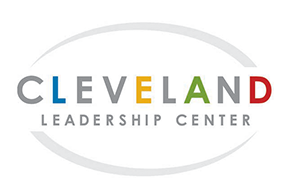
ACCELERATE 2020 JUDGE PANEL
Accelerate is a pitch competition that gives individuals across Northeast Ohio the chance to win seed money to help launch their innovative ideas to make the region a better place. The competition features six different pitch categories, each representing a distinct area.
Once you pick a category, you can start developing your Accelerate application! These categories are:
- Authentic Cleveland Experiences
- Economic Prosperity
- Education
- Health & Well-being
- Quality of Life
- Social Change
- Technovation, a separate tech-focused pitch opportunity
No matter which pitch category you choose, the strength of your idea must be shown through your application. The stronger the application, the greater the chance you have of being selected to present your idea at Accelerate 2022.
You may be asking yourself the following questions:
- “How do I create a strong submission?”
- “What are the judges looking for?”
- “Where do I even start?”
Luckily, all the information you need regarding pitch submissions is laid out for you below.
What does the Accelerate application look like?
Applicants submit proposals for the opportunity to pitch their idea at the event through this online form, where you will address each of the following topics in 250 words or less:
- Description of the initiative.
- Identify the community issue it addresses.
- How will it benefit the community?
- Why are you passionate about the issue?
- How will you know if the initiative is successful?
- How will the prize money help you achieve your goals?
What are the application reviewers looking for?
Pitch reviewers are looking for applications that are innovative, clear, and effective. It is important that your pitch specifically answers the ‘what’, the ‘why’, the ‘how’, and the ‘who’ of your idea.
Questions Accelerate Reviewers Will Ask
- Is the idea presented in this application clear and concise?
- Does the application tell us the intent and how the project will impact the community?
- Has the applicant researched what currently exists?
- What is the actual scope (or size) of the project?
Now that you know what application reviewers are looking for, you may be asking yourself, “How do I do that?”
To develop a pitch submission that will impress our reviewers and increase your chances of presenting at the event, consider each of the following questions:
1. What is your pitch idea and how will you do the work?
The first step for creating a strong application is to focus on a problem or weakness in your community that you feel needs to be addressed. In your application, you must be able to explain why you are passionate about this particular need in the community. This could be a personal experience or even a story from a friend.
You also must explain what you plan on addressing and why it needs to be addressed. Before you further develop your idea, answer this question, “What needs to be improved and what would that look like?”
For example, clarifying your passion in your pitch submission could sound like this:
I want to reduce the number of hungry residents in my neighborhood. I want to be sure everyone has a good, nutritious meal at least once a day to stay healthy and out of the hospital. Also, I think a communal meal will give lonely people a place to meet and talk with people, thereby reducing hunger and depression. If I can do this, fewer people will be in the hospital.
Once you have chosen your idea, select the appropriate Accelerate category for your idea. Next, start developing and organizing the details to bring your idea to life!
2. How would you address this problem?
After you answer the question of what needs to be improved, you must develop the “who” and the “how” of your project.
It is important not only for yourself but the Accelerate reviewers as well, to understand what steps are needed to kickstart your initiative and identify who is going to help you. These details give the reviewers a deeper understanding of your pitch idea. This can involve identifying what tools, equipment, and space you need for your project to be effective.
For example, clarifying what you must do, and with whom, could sound like this:
To best serve my neighborhood, I will need to work with our community center. I have met with the director, and she is excited to partner with my project, Morning Glory. They have plenty of space and are currently unable to serve breakfast due to staffing problems. I can assemble a team to bring or cook breakfasts that can be distributed. Morning Glory will make sure anyone can come in, sit, enjoy food, coffee, and conversation before the community center officially opens.
3. What are your goals and how will we notice or document change?
This question takes a step deeper into the “how” of your pitch submission.
When clarifying your project goals, you must be able to outline what you hope to achieve and who you hope to serve. This could be individuals, a population of people, or an organization. In addition, it is important to clarify your short- and long-term goals and how you will measure progress, including the necessary resources.
For example, clarifying your goal(s) could sound like this:
Morning Glory has chosen to provide breakfast because the community center cannot. The local churches are also unable to serve breakfast. A number of the kids and seniors who are awake early are the same people who shared how hungry they are. Morning Glory will know we are doing what we set out to do when:
1. We serve at least 10 people in the beginning, building to 50 people a day.
2. We see more neighbors waving and talking with each other.
3. Fewer seniors and kids report that they are hungry when they start the day.
4. Those we serve experience fewer extended hospital stays.
4. How will you show the community benefit?
Now that you have identified the “what,” “why,” and part of the “how,” you must now clarify who your idea is going to help. Applicants must describe the “who” they wish to help before they begin their project, and explain how their project will improve the community.
For example, clarifying how your community will benefit could sound like this:
Morning Glory hopes to show that when groups come together, many problems can be solved, in this case: hunger, loneliness, and extended hospital stays. With fewer hungry seniors and children, we believe there will be fewer hospital visits and illnesses. We will also see people coming together and fearing each other less. When we know one another, it is easier to live together and protect one another.
5. What are your funding needs and plans?
Once you’ve identified the “how” and “why” of your idea, it’s time to dig deeper and explore your project’s funding.
As a large portion of your “how,” the reviewers are seeking clear information concerning the funding of your idea. It may be helpful to ask yourself these questions when developing your funding plan:
- How would you fund without the Accelerate money?
- How would you use the Accelerate money?
- What are there other potential sources of funding for your project (donors, generated revenue, etc.)?
Because Accelerate offers the winner of the competition $5,000 and its other five finalists $2,000 (and the Technovation winner $3,500) to jumpstart their initiatives, the reviewers and judges need to know how you are going to spend the money.
For example, clearly identifying your funding plan could sound like this:
Morning Glory will use Accelerate funds to purchase plates and utensils to reduce costs and generate less trash. We will also purchase dish detergents. The community center is donating the space and their morning personnel (security and facility staff), which will allow us to focus on feeding the hungry and creating community. We believe donations from the community will help us purchase needed items to clean and maintain the space, but because food and space are donated, our costs will be low.
6. Is there a tech component of your project?
Technovation is a separate competition at Accelerate that offers an additional opportunity for pitch submissions that include a technology component. All Accelerate applicants whose idea includes a technology component can apply to pitch at Technovation in addition to their selected Accelerate category. Although the Technovation applications are reviewed separately from the Accelerate categories, the same selection criteria will be used for both.
How can I be sure I’m submitting a strong Accelerate application?
To ensure a strong pitch submission, you should focus on the who, what, why, and how of your pitch idea.
When applying, be sure to answer all the following questions clearly and succinctly:
- What’s motivating you? Why are you doing this?
- What challenges are you hoping to solve?
- How will you measure your impact?
- What is the difference you are trying to make in a person’s life or in your community?
- How will you use the funding to help you achieve your goals?
We know the Accelerate application process can seem a bit daunting. If you have questions about the process or your application, please reach out to Rachel Ciomcia at (216)-592-2280.
Want examples of what strong successful pitch ideas and presentations look like? Check out our past presenters here. Do you have an idea for bettering Cleveland and can answer each of these questions? Start your application today. Apply >
Accelerate pitches are open now through Friday, December 3, 2021. There is no limit to what you can pitch or the creativity of your ideas.
